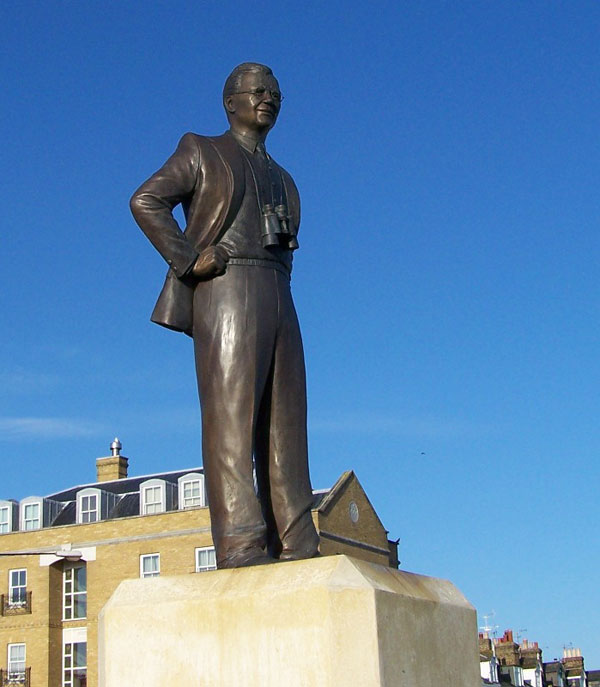Last Sunday’s BBC Antiques Roadshow came up with an interesting artefact which had a Dambuster connection. A viewer brought in the blade of an oar which she said her husband had found in a skip in Bletchley.

As can be seen from the screengrab above, this is inscribed with the names of the Oxford University eight who had taken part in the 1938 Boat Race. (For the benefit of non-UK readers: this is a race between Oxford and Cambridge University Boat Clubs, which takes place every spring on the River Thames between Putney and Mortlake.)
Roadshow expert Paul Atterbury was quick to note the possible significance of one of the names. The No. 2 oarsman is listed as H M Young (Trinity), weighing 12st 12lb, who later became famous as Melvin (‘Dinghy’) Young, pilot of AJ-A on the Dams Raid.
Paul Atterbury went on to give a brief summary of Young’s role: how he caused the initial breach in the Möhne Dam, then completed by David Maltby’s attack, and his tragic end, shot down over Holland on the way home.

However, a comparison with a picture of the genuine oar, shown above, which appears in Arthur Thorning’s 2008 biography, The Dambuster who Cracked the Dam, quickly shows that the Bletchley skip oar is not Young’s. Although the full oar isn’t shown in Thorning’s picture there are many obvious discrepancies between the style of lettering and the punctuation in both pictures. In fact, it doesn’t look at all like the work of a professional signwriter. Thorning also states that the oar was in the possession of relatives in California, along with other of Young’s rowing souvenirs.
Which leads us to a mystery. If this is not Young’s real oar, what is it? It could, of course, have belonged to one of the other seven oarsmen in the 1938 Oxford boat. Many, if not all, would have done what Young obviously did – had it inscribed as a souvenir.
But there is another intriguing possibility. One of the many stories told about the making of the 1955 film, The Dam Busters, is that the Young family lent the producers the actual oar. In one of the film’s last sequences, the camera shows some of the things which signify the crews who went missing – empty chairs in the mess, a ticking alarm clock, and poignantly, the name of H M Young on an oar.

Here is a screengrab from this scene. Although this is not of the highest quality, it’s plain that the lettering is consistent with that on the oar from the Bletchley skip. So it would seem that even if the film’s props department had a loan of the original oar, they decided it wasn’t suitable and made another one. They thereby caused yet another of The Dam Busters myths to be wrong. So, this could be the prop, created for the film and now left in a skip.
However, there’s one more thing, as Lt Columbo used to say. It’s possible that the oar from the Bletchley skip was not even used in the film. If you look carefully at the screengrab above, you can’t see the name of the Bow oarsman J L Garton at all, and there seems to be a larger gap between the centre spine of the blade and Young’s name than appears on the Antiques Roadshow picture. Is it possible that when director Michael Anderson and cinematographer Erwin Hillier came to shoot the actual scene, they discovered that Garton’s name got in the way and so a new prop without his name was created and used in the actual sequence?
Paul Atterbuy gave a valuation of somewhere between £200 and £500 if this had been the real Young oar. This seems a bit on the conservative side to me, given that people have paid considerably more than this for Gibson autographs and signed first editions of Paul Brickhill’s book. How much it would be worth as a film prop is probably anyone’s guess, even coming from a film as famous as The Dam Busters.



